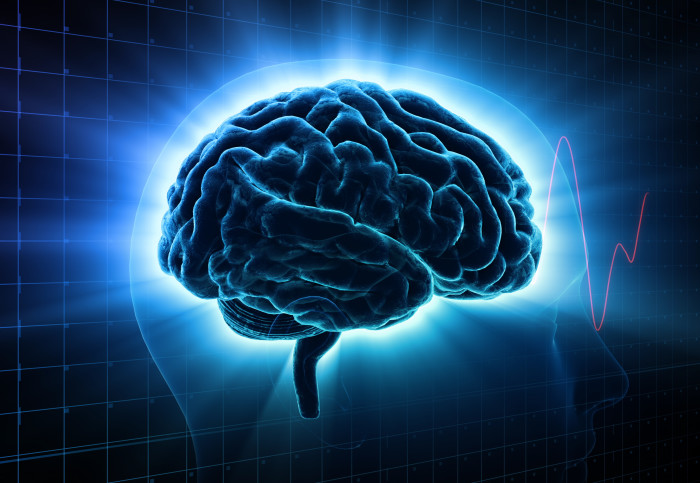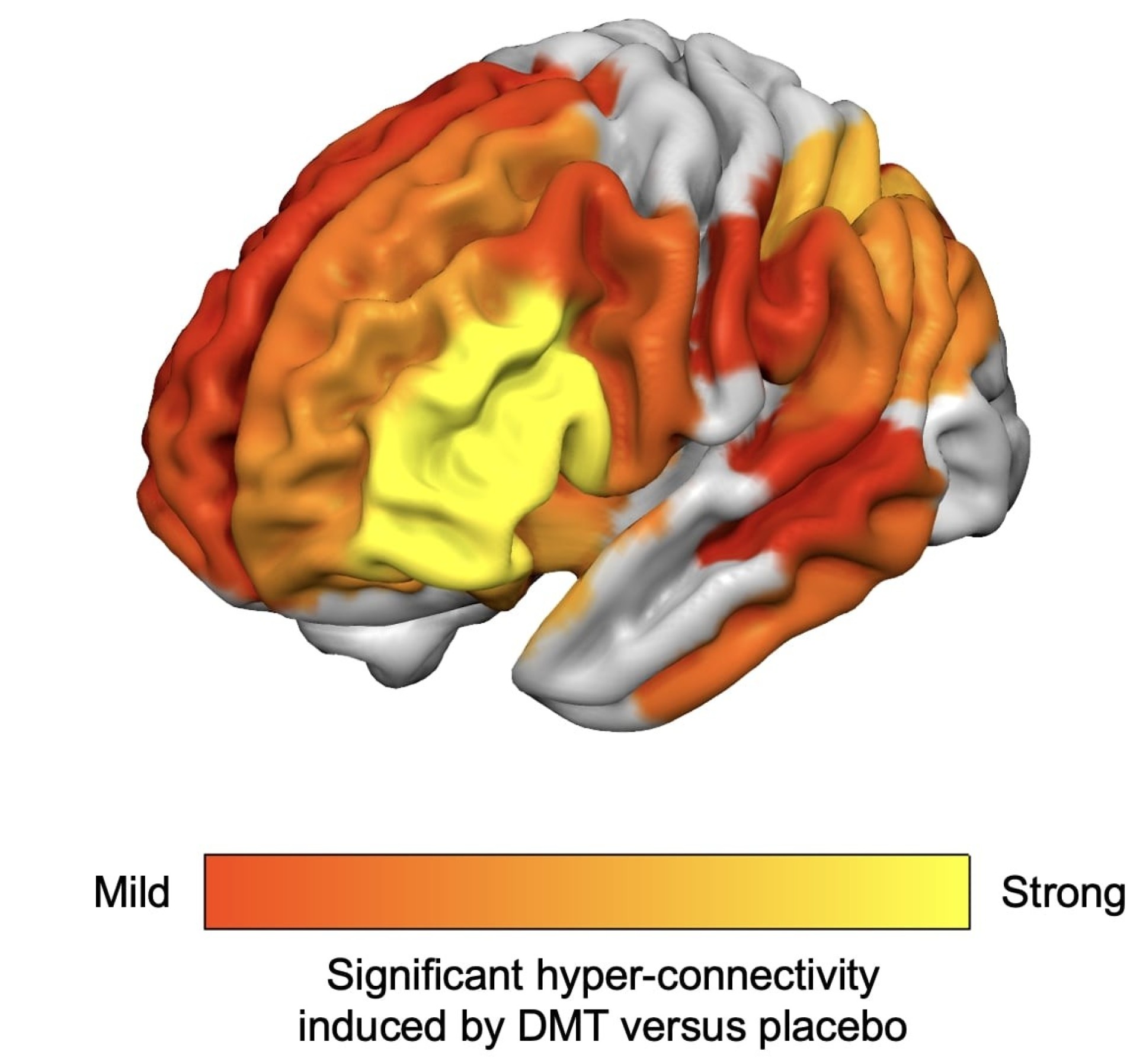

Scientists have gleaned new insights into how psychedelics alter conscious experience via their action on brain activity.
In a study at Imperial College London, detailed brain imaging data from 20 healthy volunteers revealed how the potent psychedelic compound, DMT (dimethyltryptamine), alters brain function. During the immersive DMT experience there was increased connectivity across the brain, with more communication between different areas and systems. The changes to brain activity were most prominent in areas linked with ‘higher level’ functions, such as imagination.
"This work is exciting as it provides the most advanced human neuroimaging view of the psychedelic state to-date." Dr Chris Timmermann Centre for Psychedelic Research
DMT is a potent psychedelic found naturally in certain plants and animals. It occurs in trace amounts in the human body and is the major psychoactive compound in ayahuasca – the psychedelic brew prepared from vines and leaves and used in ceremonies in south and central America.
The study, published in the journal PNAS, is the first to track brain activity before, during and after the DMT experience in such detail.
Dr Chris Timmermann, from the Centre for Psychedelic Research at Imperial College London, and first author on the study, said: “This work is exciting as it provides the most advanced human neuroimaging view of the psychedelic state to-date.
“One increasingly popular view is that much of brain function is concerned with modelling or predicting its environment. Humans have unusually big brains and model an unusually large amount of the world. For example, like with optical illusions, when we’re looking at something, some of what we’re actually seeing is our brain filling in the blanks based on what we already know. What we have seen with DMT is that activity in highly evolved areas and systems of the brain that encode especially high-level models becomes highly dysregulated under the drug, and this relates to the intense drug ‘trip’.”

Unlike other classic psychedelics, such as LSD or psilocybin, DMT’s effects on the brain are relatively brief, lasting a matter of minutes, rather than hours. DMT can produce intense and immersive altered states of consciousness, with the experience characterised by vivid and bizarre visions, a sense of ‘visiting’ alternative realities or dimensions, and similarities with near death experiences. But exactly how the compound alters brain function to account for such effects has been unclear.
In the latest study, 20 healthy volunteers were given an injection of the drug while researchers from Imperial’s Centre for Psychedelic Research captured detailed imagery of their brains, enabling the team to study how activity changes before, during and after the trip.
Volunteers received a high dose of DMT (20mg, given intravenously), while simultaneously undergoing two types of brain imaging: functional magnetic resonance imaging (fMRI) and electroencephalography (EEG). The total psychedelic experience lasted about 20 minutes, and at regular intervals, volunteers provided a rating of the subjective intensity of their experience (on a 1 to 10 scale).

The fMRI scans found changes to activity within and between brain regions in volunteers under the influence of DMT. Effects included increased connectivity across the brain, with more communication between different areas and systems. These phenomena, termed ‘network disintegration and desegregation’ and increased ‘global functional connectivity’, align with previous studies with other psychedelics. The changes to activity were most prominent in brain areas linked with ‘higher level’, human-specific functions, such as imagination.
"Psychedelics are proving to be extremely powerful scientific tools for furthering our understanding of how brain activity relates to conscious experience." Professor Robin Carhart-Harris University of California, San Francisco
The researchers highlight that while their study is not the first to image the brain under the influence of psychedelics or the first to show the signatures of brain activity linked to psychedelics, it is the first to combine imaging techniques to study the brain during a highly immersive psychedelic experience. They explain the work provides further evidence of how DMT, and psychedelics more generally, exert their effects by disrupting high level brain systems.
Prof Robin Carhart-Harris, founder of the Centre for Psychedelic Research at Imperial College London, and senior author on the paper (now working at the University of California, San Francisco), commented: “Motivated by, and building on our previous research with psychedelics, the present work combined two complementary methods for imaging the brain imaging. fMRI allowed us to see the whole of the brain, including its deepest structures, and EEG helped us view the brain’s fine-grained rhythmic activity.
“Our results revealed that when a volunteer was on DMT there was a marked dysregulation of some of the brain rhythms that would ordinarily be dominant. The brain switched in its mode of functioning to something altogether more anarchic. It will be fascinating to follow-up on these insights in the years to come. Psychedelics are proving to be extremely powerful scientific tools for furthering our understanding of how brain activity relates to conscious experience.”
The Imperial team is now exploring how to prolong the peak of the psychedelic experience through continuous infusion with DMT, and some are also advising on a commercially run trial to assess DMT for patients with depression.
The research was funded by a donation from Patrick Vernon, mediated by The Beckley Foundation.
‘Human brain effects of DMT assessed via EEG-fMRI’ by Christopher Timmermann et al. is published in the journal PNAS.
Main image credit: Shutterstock.
Article text (excluding photos or graphics) © Imperial College London.
Photos and graphics subject to third party copyright used with permission or © Imperial College London.
Reporter
Ryan O'Hare
Communications Division

Contact details
Tel: +44 (0)20 7594 2410
Email: r.ohare@imperial.ac.uk
Show all stories by this author



